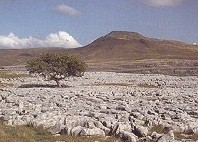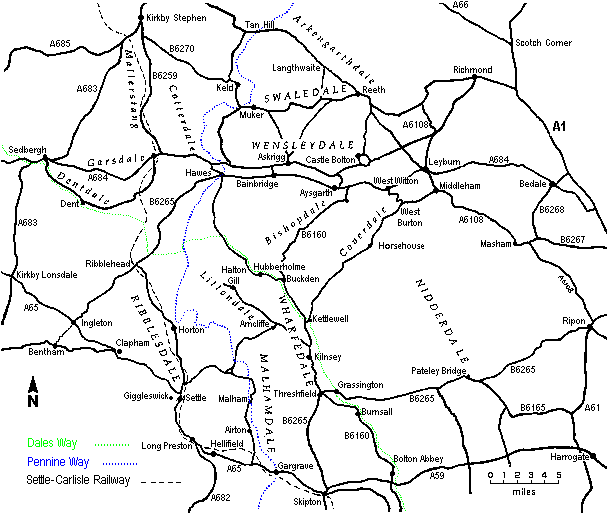
| | The Yorkshire Dales has outstanding scenery, a diversity of wildlife habitats, a rich cultural heritage and peacefulness. In 1954, 1769 square kilometres was designated a national park in recognition of these most important qualities.
The Dales lie astride the Pennines in the north of England in the counties of North Yorkshire and Cumbria. There are over 20 main dales, differing much from each other in character and atmosphere. To the south of the area lies a highly populated industrial area while to the north thinly settled uplands stretch to the Tees and beyond. About 20,000 people live in the scattered farms, villages and small market towns of the Dales.
|
People have lived in the area for over 10,000 years and have left their mark on the landscape in the form of ancient settlement sites, disused mineral workings and the patchwork of dry-stone walls and barns so typical of the Dales. Early farmers cleared the woodland and developed the fields.
It is hoped that the National Park Authority, which is no longer part of the democratic process, can balance the needs of the Dales community with those who wish to visit and enjoy its special environment.
Many visitors are unaware that the Yorkshire Dales are essentially a managed landscape. While the major land-forms were created millions of years ago, the distinctive character of the Dales is largely due to man's intervention. A succession of settlers left their mark on the land - by clearing woodland, building villages and roads, cultivating crops and later building barns and walls which are such a feature of the area. Though few crops grow successfully on the uplands, the lush valley grass provides ideal grazing. Dairy and mixed-stock farming predominate in the lower dales; the high fells are left to the Swaledale sheep.
The Yorkshire Dales provide archaeologists with an abundance of riches. The Romans drove their ruler-straight roads across the fells. The Angles, Danes and Norsemen came in their turn and the story of their settlements can still be read today in the evocative names of places and natural features.
The Middle Ages brought the Normans, who built castles and created hunting forests. Monks from thegreat abbeys farmed vast estates; they were the first to make cheese in Wensleydale and bred the hardy hill sheep on the inhospitable fells. While we tend to think of the Yorkshire Dales as a farming community, lead-mining was an important industry throughout the North Pennines until late last century.

| | The typical Dales landscape of dry stone walls and field barns came about gradually, as land-owners enclosed the open fells for their livestock. The landscape is always changing, and the Dales people of today are part of this changing pattern.
The Yorkshire Dales are a spectacular, beautiful and living landscape: more than 60,000 people live and work in the Yorkshire Dales area. While tourism is becoming increasingly important, the local economy is still very dependent on farming. The land provides 32% of all employment within the national park area, and many of the customs and festivals have their origins in agriculture.
|
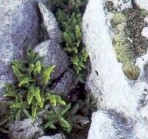
| | Limestone pavements
Limestone Pavements are found around Wharfedale, to the north of Malham and around Ingleborough. They have taken shape over the 12,000 years since the end of the most recent Ice Age. Many were formed by glaciers scraping the land down to bare limestone which has since been attacked by rainwater to produce a network of blocks (clints) and crevices (grikes). The damp, sheltered grikes provide a refuge for woodland plants, including several rare ferns.
|

| | Hay meadows
Traditionally managed hay meadows form a blaze of colour along the valley bottoms during June and July. The colour comes from a wide range of wild flowers, the most obvious of which are wood cranesbill, buttercup, pignut and clover. The botanical diversity - some hay meadows contain 80 or more plant species - depends on limited use of fertiliser and late cutting. Some of the finest meadows can be seen in Swaledale, upper Wharfedale, Littondale and upper Wensleydale.
|

| | Limestone grassland
The close-cropped 'billiard table' turf of calcareous grassland contains a surprising variety of limeloving grasses and herbs, often grazed as much by rabbits as by sheep. Wharfedale, Ribblesdale, Littondale and Malham form the main areas for this type of pasture, which has usually received little in the way of fertiliser. Birdsfoot trefoil, rock rose, mountain pansy and the aromatic wild thyme create a distinctive flora.
|

| | Woodland
Just 1 per cent of the Dales landscape is covered by semi-natural broad-leaved woodland, much of it now confined to steep slopes or gills. Special to the Dales are the 'hanging' ash woods that line the sides of dales such as Wharfedale. Also important are the extensive oak woods around Bolton Abbey and the small scattered woods of Swaledale. Woods act as vital refuges for a host of animals, including badger, roe deer, nuthatch and woodpecker.
|
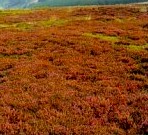
| | Moorland
Rough grassland, blanket bog and great swathes of heather cover nearly all the high ground of the Dales. Damp grassland and bog - often dominated by cotton grass - are home to species of upland wader such as curlew, snipe and redshank. Heather moorland, which colours large areas in the east and north purple in August, is usually managed for grouse, but is important too for bilberry, cowberry, cloudberry, merlin, golden plover and even adders.
|

| | Rivers and riverbanks
The characteristic brown peat staining of Dales rivers and the natural foaming around waterfalls belie their clean, unpolluted state. The white-breasted dipper may be seen bobbing on rocks in the water, while the goosander and the brilliantly coloured kingfisher are rewarding sights. Brown trout inhabit most rivers, while those flowing westwards - the Ribble and the Lune and its tributaries also contain salmon and sea trout.
|
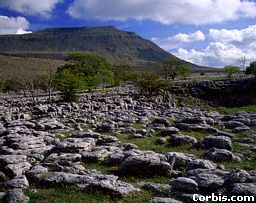 | |
Limestone Pavement in Yorkshire Dales, ca. May 1995
Early purple orchids (Orchis mascula), flower between the blocks of a limestone pavement near Ingleborough.
Ingleborough (2373 ft) is a millstone grit plateau overlying limestone which is famous for it's potholing.
Andrew Brown; Ecoscene (www.corbis.com, Image ID: EC004187)
|
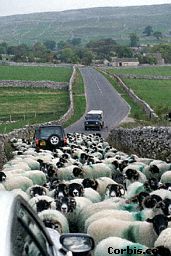 | |
Sheep Block Road, October 22, 1995
Malham, Yorkshire Dales, North Yorkshire, England, UK
Sheep block a country road in Malham in the Yorkshire Dales of England, preventing cars from passing.
Patrick Ward (www.corbis.com, Image ID: PW001045)
|
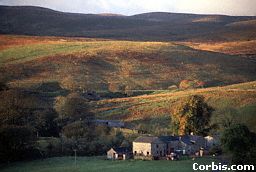 | |
Farm in Yorkshire Dales
October 28, 1995 near Hawes, North Yorkshire, England, UK
A small farm near the village of Hawes in the Yorkshire Dales in North Yorkshire, England.
Patrick Ward (www.corbis.com, Image ID: PW001186)
|
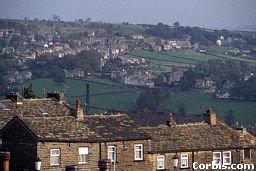 | |
Town in Yorkshire Dales
October 27, 1995
The small town of Swaledale in the Yorkshire Dales of England.
Patrick Ward (www.corbis.com, Image ID: PW001190)
|
 | |
Cyclist in Yorkshire Dales
September 24, 1995, Helwith Bridge, Yorkshire Dales, England, UK
A cyclist on the Three Peaks Course on Pen-y-Ghent mountain in North Yorkshire.
Patrick Ward (www.corbis.com, Image ID: PW001730)
|
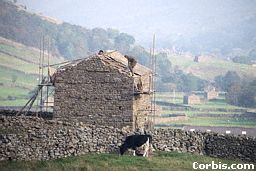 | |
Repairing Stone Barn, Yorkshire Dales
October 11, 1995 near Thwaite, Yorkshire, Lake District, England, UK
Two men repair the roof of a stone barn near Thwaite in the Yorkshire Dales. Lake District, England, UK. Ca. 1995.
Patrick Ward (www.corbis.com, Image ID: PW004584)
|
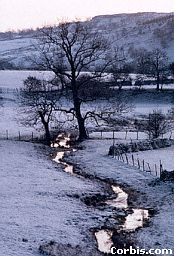 | |
Snow on the Yorkshire Dales
ca. 1991, England
Robert Holmes (www.corbis.com, Image ID: RH010853)
|
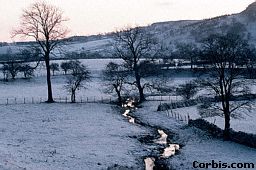 | |
Snow on the Yorkshire Dales
ca. 1983, England
Robert Holmes (www.corbis.com, Image ID: RH010854)
|
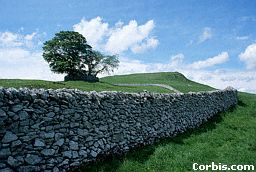 | |
Stone Wall in Yorkshire Dales
ca. 1980, Yorkshire Dales, England
Robert Holmes (www.corbis.com, Image ID: RH010851)
|
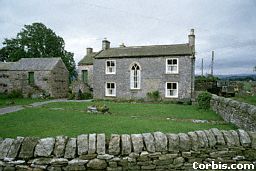 | |
Farmhouse in Yorkshire Dales
Caperby, Yorkshire Dales, Yorkshire, England, UK
A farmhouse among older stone buildings in the rural English village of Caperby in the Yorkshire Dales.
Adam Woolfitt (www.corbis.com, Image ID: AW012337)
|
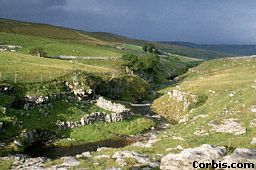 | |
River in the North Yorkshire Dales
ca. 1970-1995, North Yorkshire, England, UK
A river meanders through sloping green pastures in North Yorkshire, England.
Adam Woolfitt (www.corbis.com, Image ID: AW012681)
|
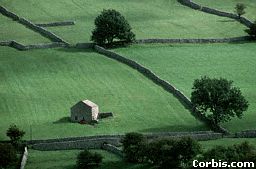 | |
Walled Fields in Yorkshire Dales
Old stone walls separate fields in the Yorkshire Dales. Some of the double walls were used as drovers roads in the Middle Ages.
Adam Woolfitt (www.corbis.com, Image ID: AW012349)
|
 | |
Stone Wall Farms of Yorkshire Dales, England
Bridge Farm, Foxup, Yorkshire Dales, Yorkshire, England, UK
Old stone walls separate fields in the Yorkshire Dales. Some of the double walls were used as drovers roads in the Middle Ages.
Adam Woolfitt (www.corbis.com, Image ID: AW012368)
|
 | |
Walled Fields in Yorkshire Dales, England
Yorkshire Dales, Yorkshire, England, UK
Old stone walls separate fields in the Yorkshire Dales. Some of the double walls were used as drovers roads in the Middle Ages.
Adam Woolfitt (www.corbis.com, Image ID: AW012350)
|
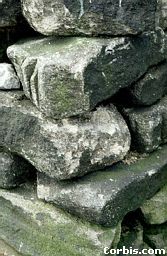 | |
Dry Stone Wall, Yorkshire Dales
ca. 1970-1994, Yorkshire Dales, Yorkshire, England, UK
A dry stone wall in the Yorkshire Dales.
Adam Woolfitt (www.corbis.com, Image ID: AA001147)
|
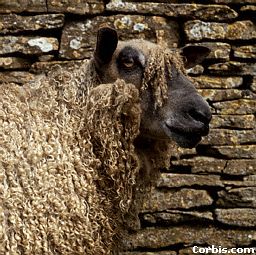 | |
Wensleydale Sheep Beside Wall
ca. 1985-1995, Yorkshire Dales, England, UK
A Wensleydale sheep stands against a stone wall.
Robert Dowling (www.corbis.com, Image ID: RD001468)
|
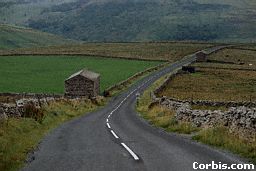 | |
Stone Walls in Yorkshire Pastures
Yorkshire Dales National Park, England, UK
Craig Aurness (www.corbis.com, Image ID: 10869)
|
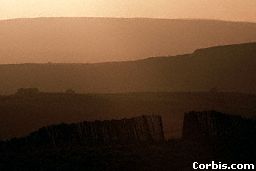 | |
Snow Fence in Field
October 1984, Yorkshire Dales National Park, Yorkshire, England, UK
Annie Griffiths Belt (www.corbis.com, Image ID: GF004908)
|



